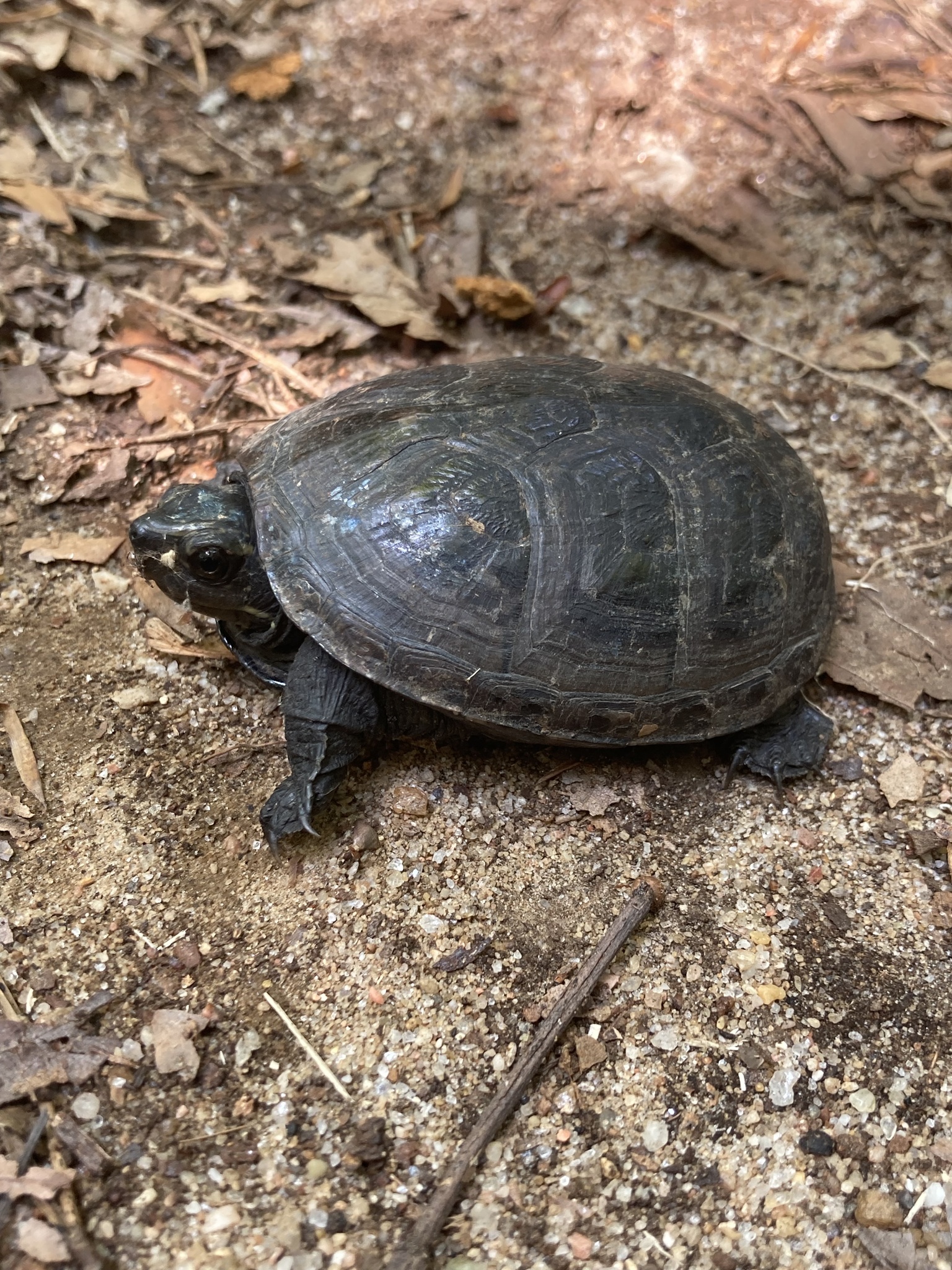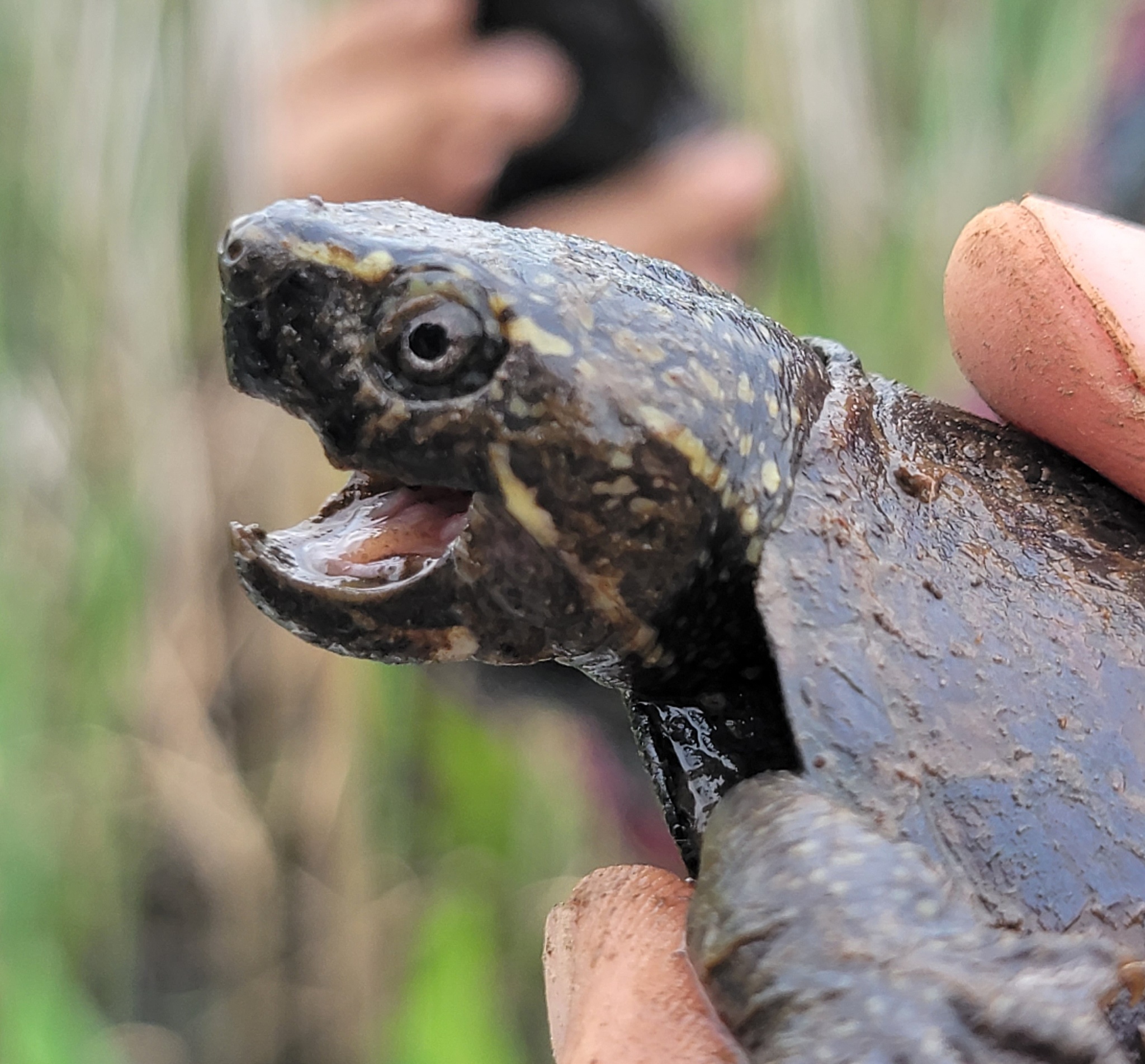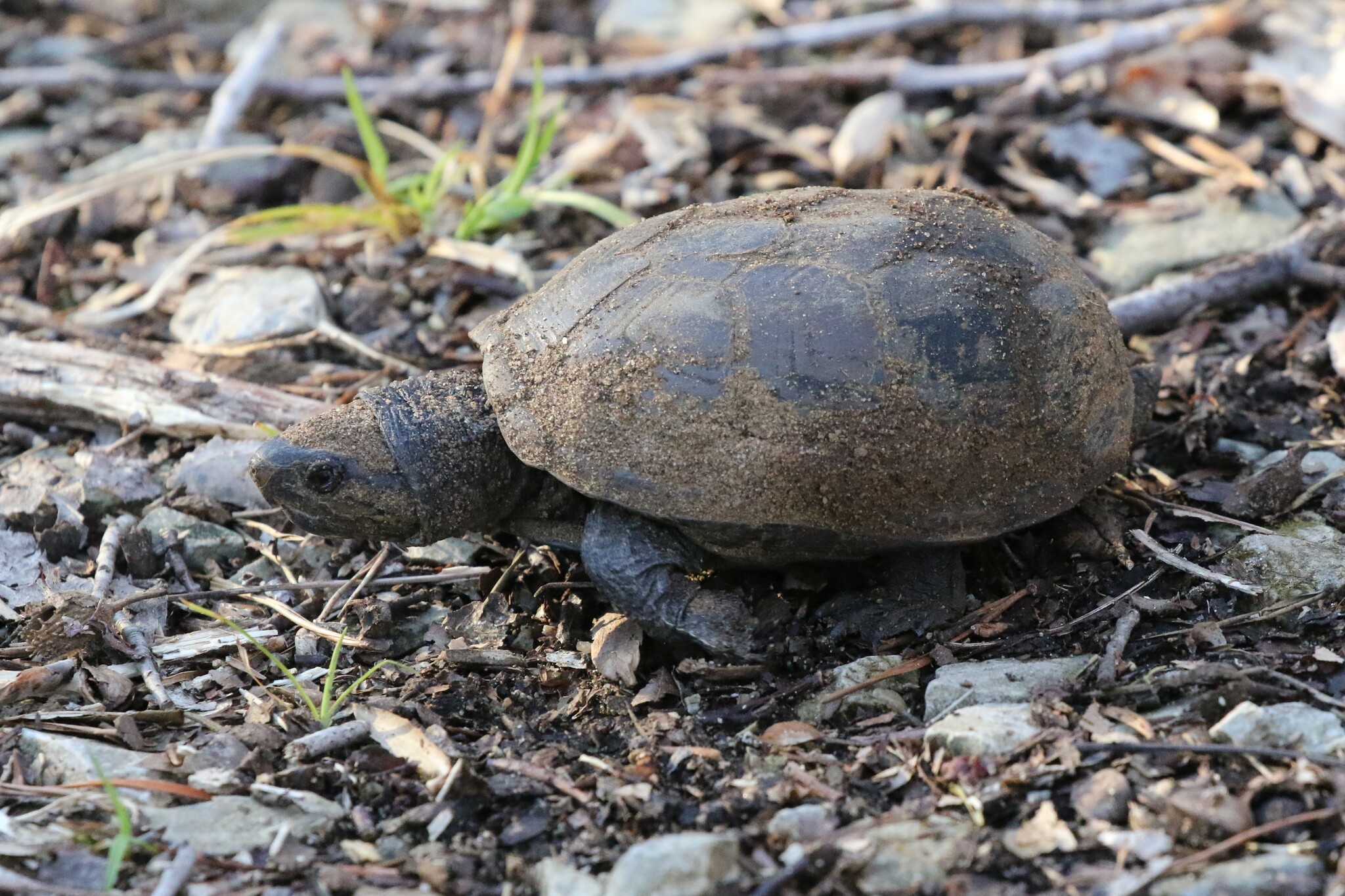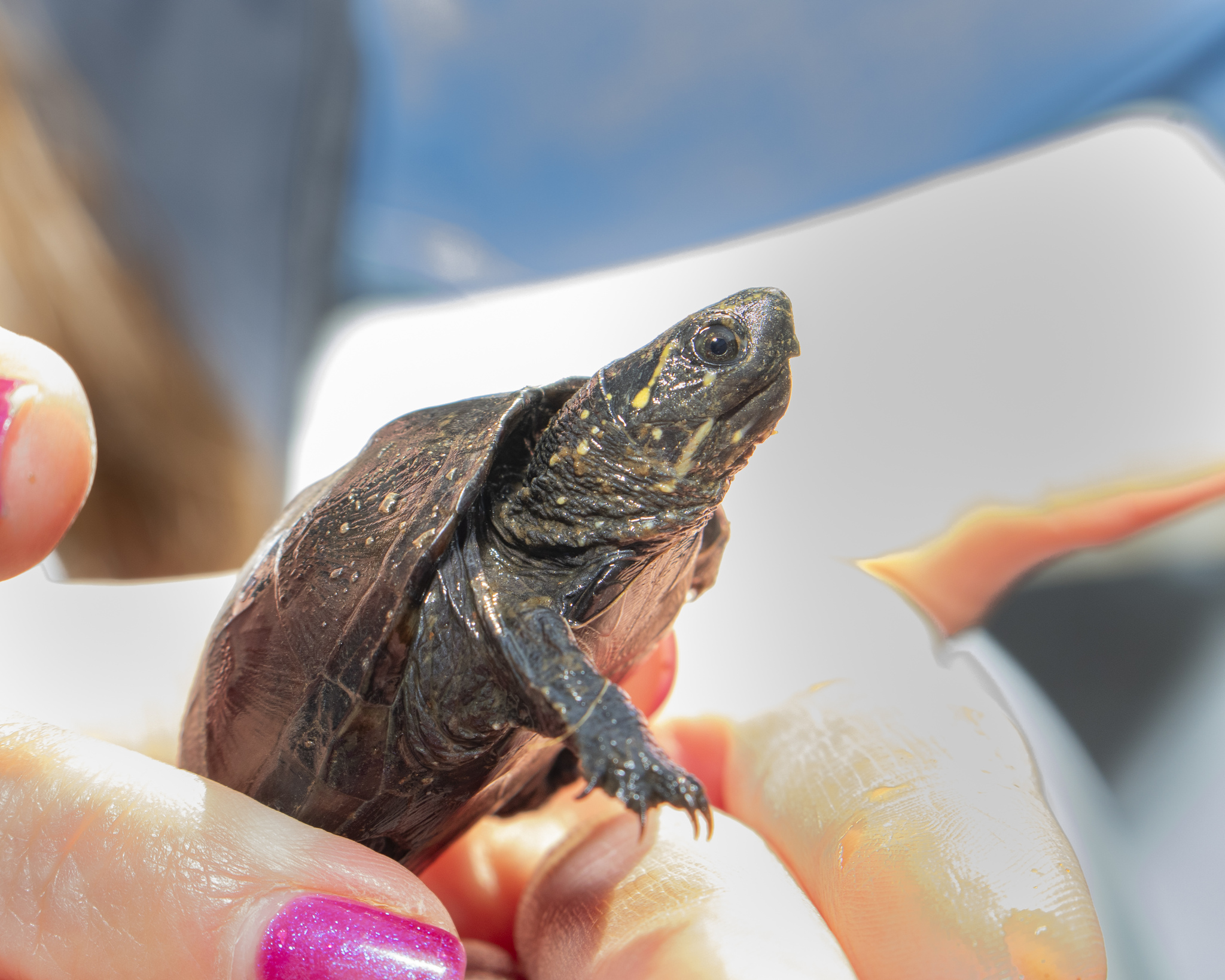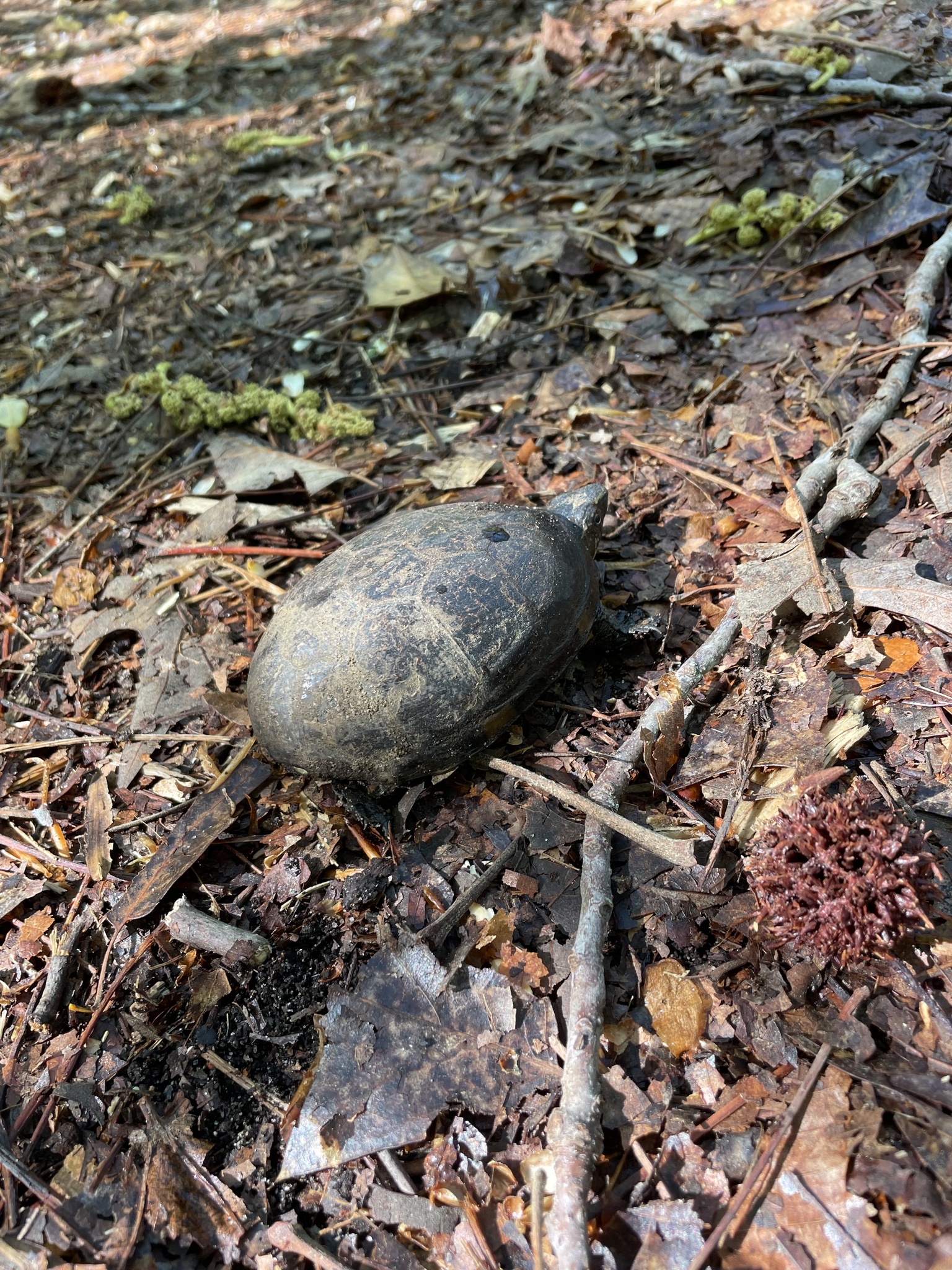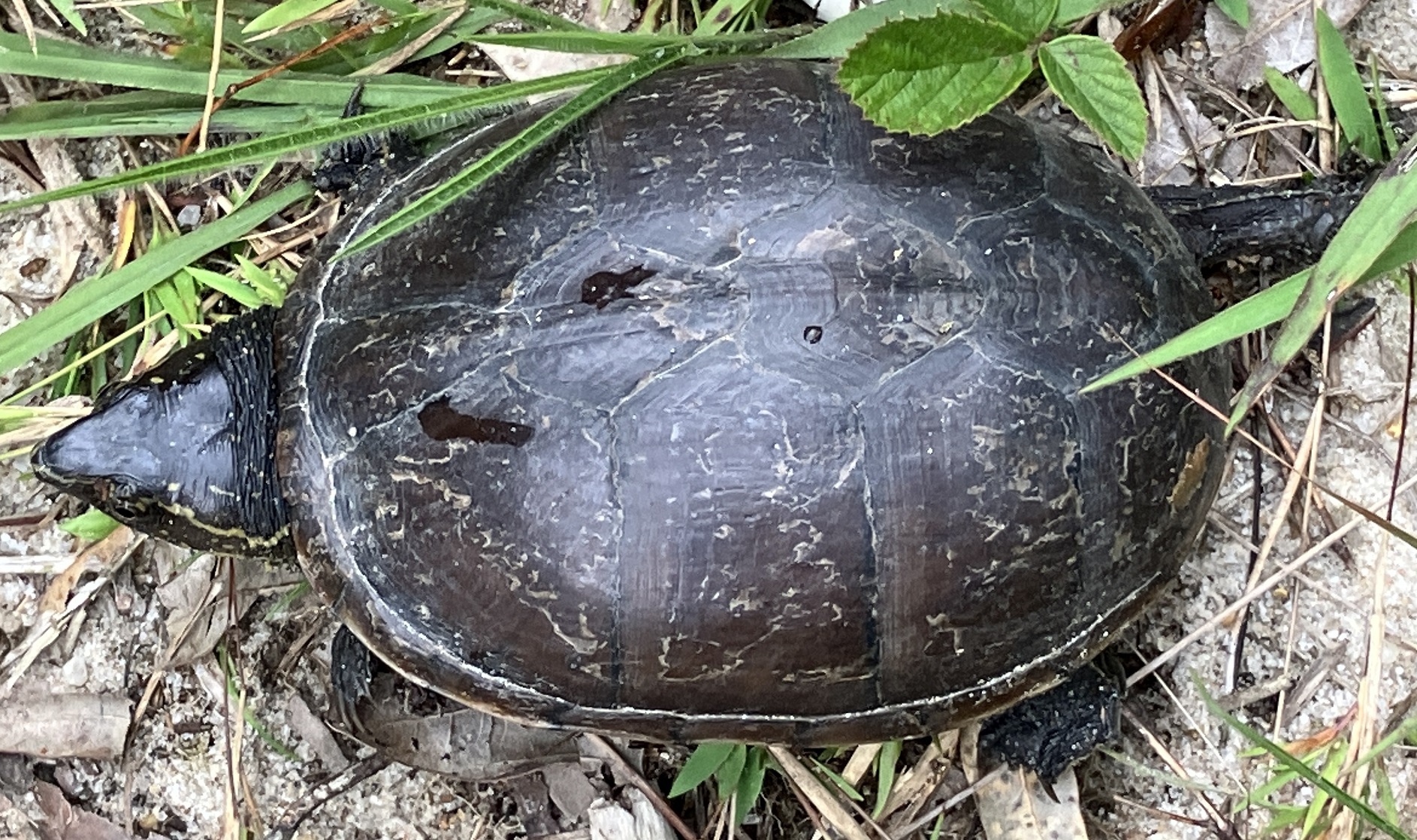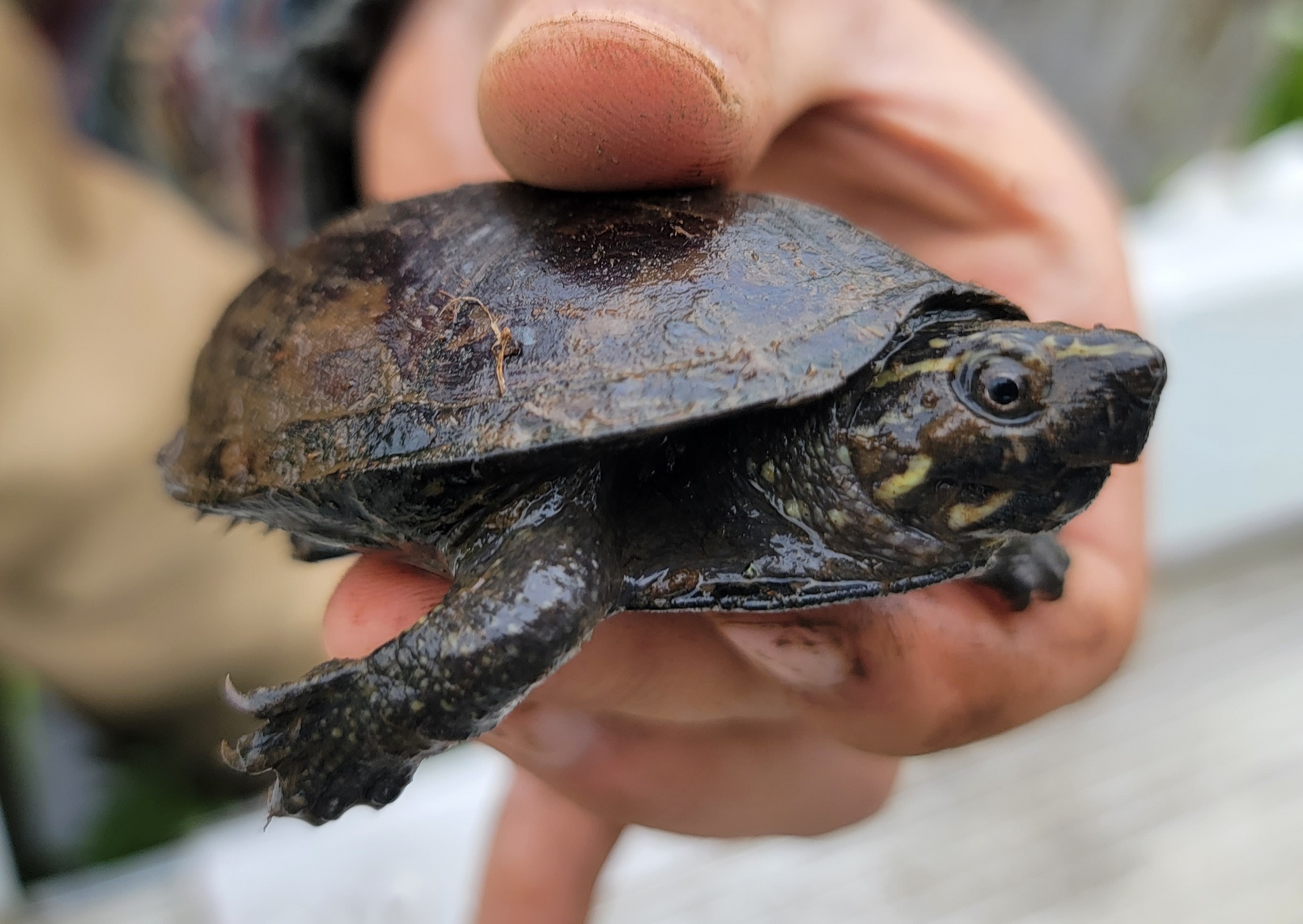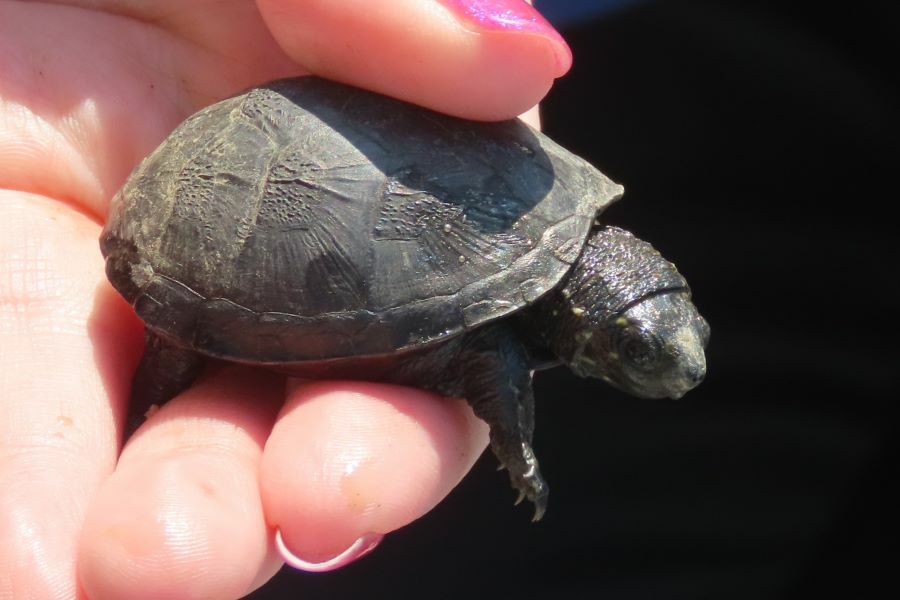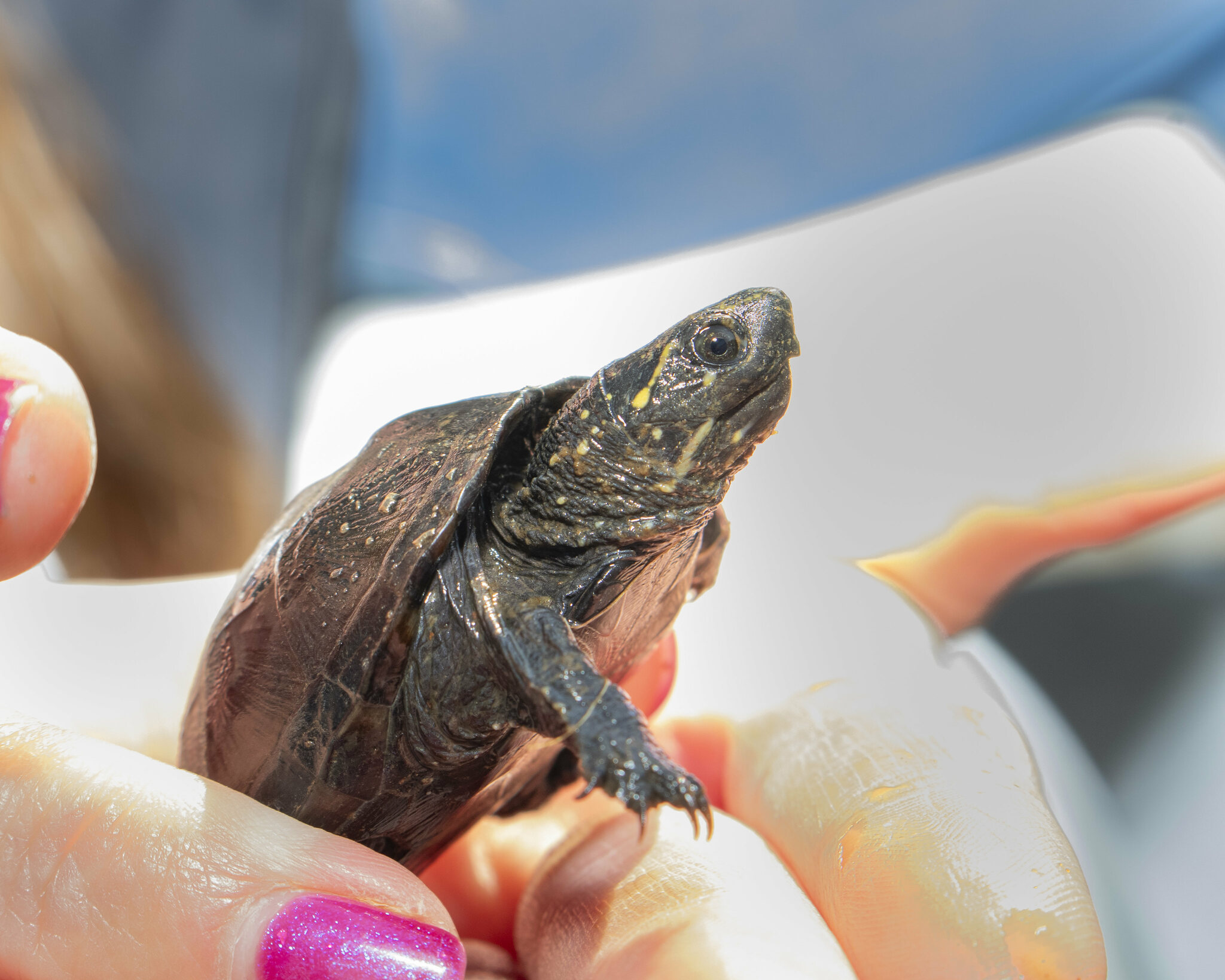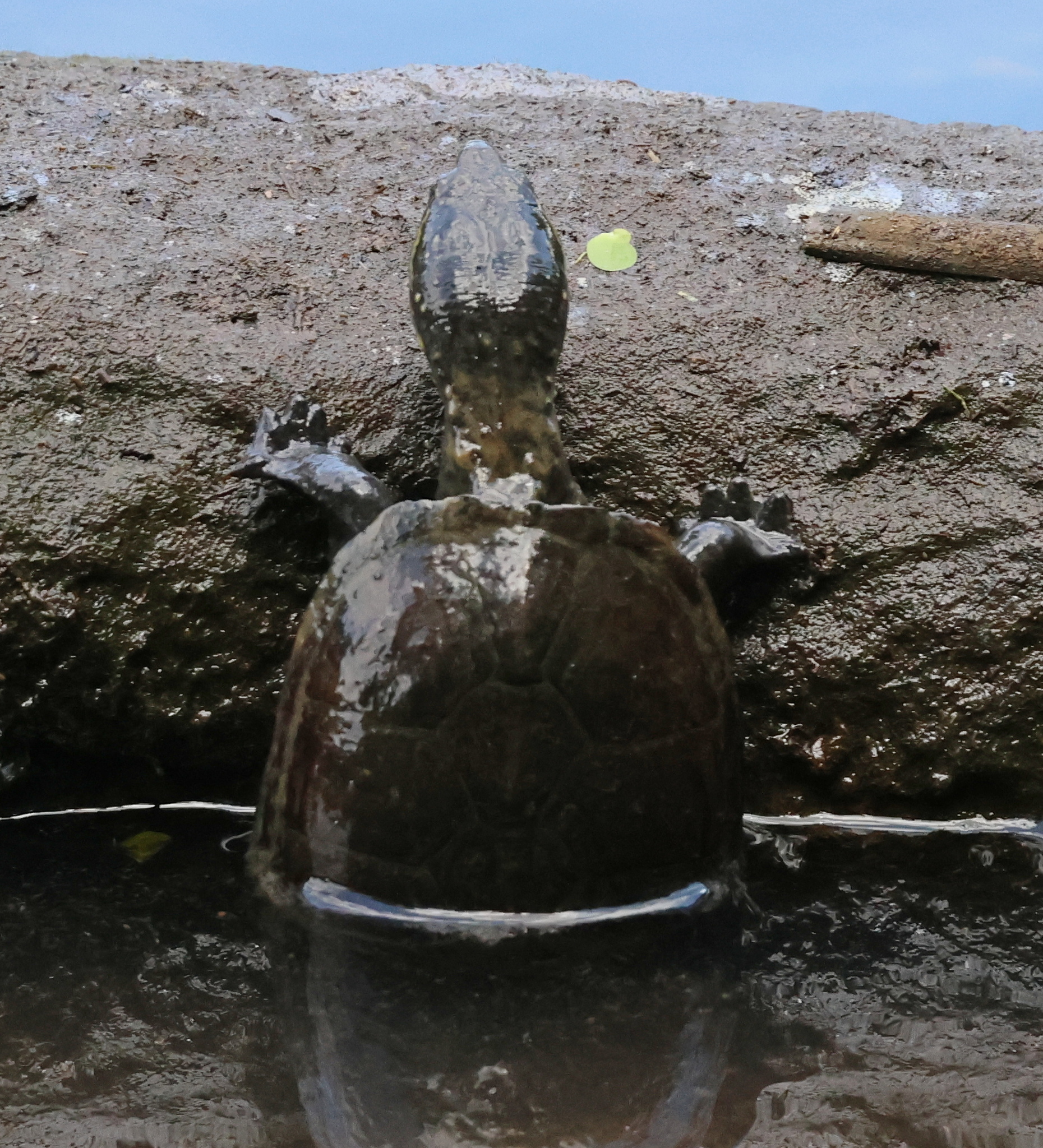Map Snapshot





16 Records
Status
The status of Striped Mud Turtle (Kinosternon baurii) in Maryland is uncertain. Regional records may be released pets or part of a northward expansion. Please share any and all records of this species in Maryland.
Description
Note three light-colored lines across its smooth carapace, though these may be inconspicuous or absent in northern part of range. Pay special attention to facial stripe pattern, especially from the eye to tip of the nose (i.e., canthal stripe).
Seasonality Snapshot
Source: Wikipedia
| Striped mud turtle | |
|---|---|

| |
| Climbing a tree, Florida | |
| Scientific classification | |
| Domain: | Eukaryota |
| Kingdom: | Animalia |
| Phylum: | Chordata |
| Class: | Reptilia |
| Order: | Testudines |
| Suborder: | Cryptodira |
| Family: | Kinosternidae |
| Genus: | Kinosternon |
| Species: | K. baurii
|
| Binomial name | |
| Kinosternon baurii | |
| Synonyms[3] | |
The striped mud turtle (Kinosternon baurii) is a species of turtle in the family Kinosternidae. The species is native to the southeastern United States.
Etymology
[edit]The specific name, baurii, is in honor of herpetologist Georg Baur.[4][5]
Geographic range
[edit]The striped mud turtle is found in Florida, Georgia, North Carolina, South Carolina, Maryland, and Virginia.[2]
Description
[edit]K. baurii has three light-colored stripes along the length of the smooth carapace. It can grow to a straight carapace length of 8–12 cm (3-4¾ inches).
-
Carapace, Florida
-
Carapace, Florida
-
Carapace, Florida
-
Plastron, North Carolina
-
Plastron, Florida
Habitat and behavior
[edit]K. baurii is a common species found in freshwater habitats. It wanders about on land more than any other of the mud turtles and can sometimes be observed foraging for food in cow dung.
Diet
[edit]The striped mud turtle is omnivorous. It eats insects, snails, fish, carrion, algae, and plants. The striped mud turtle also eats dried up krill.

Captivity
[edit]As a pet K. baurii is easy to care for, readily eating commercial turtle foods, feeder fish, and worms. Kept communally, they may exhibit aggressive behavior towards each other, most likely males are more inclined to fight than females.
Reproduction
[edit]Adult females of K. baurii nest from September to June. The eggs, which are slightly over 2.5 cm (1 in) long, hatch 13 to 19 weeks later. The hatchlings are about 2.5 cm (1 inch) in straight carapace length and, unlike the adult turtles, have keeled carapaces.
-
Hatchling carapace, Florida
-
Hatchling plastron, Florida
References
[edit]- ^ van Dijk PP (2011). "Kinosternon baurii (errata version published in 2016)". The IUCN Red List of Threatened Species 2011: e.T163429A97379931. https://dx.doi.org/10.2305/IUCN.UK.2011-1.RLTS.T163429A5605837.en. Downloade on 15 June 2021.
- ^ a b Rhodin 2010, p. 000.96
- ^ Fritz, Uwe; Havaš, Peter (2007). "Checklist of Chelonians of the World". Vertebrate Zoology. 57 (2): 251. doi:10.3897/vz.57.e30895. ISSN 1864-5755. S2CID 87809001.
- ^ Species Kinosternon baurii at The Reptile Database www.reptile-database.org.
- ^ Beolens, Bo; Watkins, Michael; Grayson, Michael (2011). The Eponym Dictionary of Reptiles. Baltimore: Johns Hopkins University Press. xiii + 296 pp. ISBN 978-1-4214-0135-5. (Kinosternon baurii, p. 19).
- Bibliography
- Rhodin, Anders G.J.; van Dijk, Peter Paul; Iverson, John B.; Shaffer, H. Bradley (2010-12-14). "Turtles of the world, 2010 update: Annotated checklist of taxonomy, synonymy, distribution and conservation status" (PDF). Chelonian Research Monographs. 5. Archived from the original (PDF) on 2011-07-17.
Further reading
[edit]- Behler, John L.; King, F. Wayne (1979). The Audubon Society Field Guide to North American Reptiles and Amphibians. New York: Alfred A. Knopf. 743 pp. ISBN 0-394-50824-6. (Kinosternon bauri, pp. 438–439 + Plate 317).
- Garman S (1891). "On a Tortoise found in Florida and Cuba, Cinosternum Baurii ". Bulletin of the Essex Institute 23: 141–144. (Cinosternum baurii, new species).
- Powell R, Conant R, Collins JT (2016). Peterson Field Guide to Reptiles and Amphibians of Eastern and Central North America, Fourth Edition. Boston and New York: Houghton Mifflin Harcourt. xiv + 494 pp. ISBN 978-0-544-12997-9. (Kinosternon baurii, pp. 223–224 + Plate 19).
- Smith, Hobart M; Brodie, Edmund D. Jr. (1982). Reptiles of North America: A Guide to Field Identification. New York: Golden Press. 240 pp. ISBN 0-307-13666-3 (paperback); ISBN 0-307-47009-1 (hardcover). (Kinosternon bauri, pp. 24–25).
